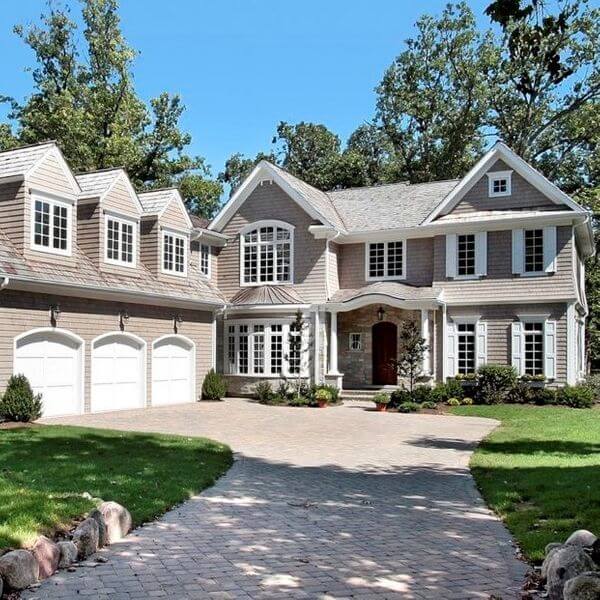Traditional Vinyl Siding Replacement Cost
Use our guide below to determine if traditional vinyl siding is right for your home. Compare strengths and weaknesses of traditional vinyl siding, color options, textures, and more.
Fully installed vinyl siding replacement can cost as little is $400 per 10-foot section pending the installation details or as much as $625 per 10-foot section depending on your choice of color, textures, style, efficiency rating, and more.
Non-Insulated Vinyl Siding Installation and Replacement
Conventional non-insulated vinyl siding is a popular option for your home’s exterior. For decades vinyl siding has assisted homeowners with reducing annual maintenance as well as offer an updated look to the exterior of the home. Most of the time, exterior house painting is a project that the do-it-yourself homeowners will take on with confidence. This work can be done affordably; however, it can take an extreme amount of time. Not to mention that Mother Nature doesn’t always work with your “free time.” In some cases, this do-it-yourself project has been known to cost the average homeowner a summer or two of their precious "Free-Time.” Not to mention the hazards of climbing up and down ladders or the accidental spilling of paint all over your landscaping. Does this sound familiar??
Hiring a professional painting crew is a good option for those homeowners not skilled or ambitious enough to take on such a monumental task. However, over time this can add up to a very large and potentially on-going expense that most homeowners don’t factor into their budgets.
Advantages of Conventional Vinyl Siding
Low Upfront Cost
As compared to other forms of wood/cedar siding or aluminum/Steel siding, conventional non-insulated vinyl siding is relatively inexpensive.
Appearance
Conventional non-insulated vinyl siding is generally quite attractive to look at, once fully and properly installed. The wide variety of colors and exterior profiles to choose from makes conventional non-insulated vinyl siding a popular way to freshen up your home.
Durability
Conventional non-insulated vinyl siding is a relatively durable option as compared to the high maintenance and rot potential of wood siding products. It can last for a long period of time without the annual need to regularly paint or caulk to seal it from the harsh weather conditions that beat up your home’s exterior.

Drawbacks of Conventional Vinyl Siding
Insufficient Insulation
Conventional non-insulated vinyl siding does not have the additional layer to keep your home well insulated especially in the extremely cold winter months.
Durability - Deformation
Conventional non-insulated vinyl siding is very light weight which makes it easier to work with; however, it is quite vulnerable to extreme weather conditions. Over time it can potentially warp during extreme heat conditions. Remember to take precautions when grilling. If a grill is too close to your siding walls it will melt conventional vinyl siding leaving permanent visible damage and a costly repair. In addition, it may crack when impacted in cold weather conditions.
Color Retention
Conventional non-insulated vinyl siding fades slowly when exposed to the elements. In addition to the color fading, traditional vinyl siding is also prone to cracking and chalking.
